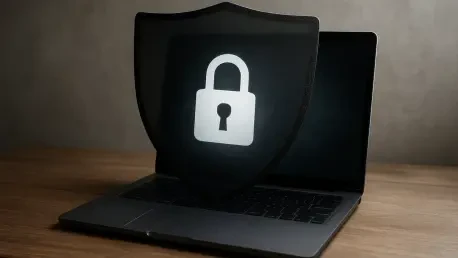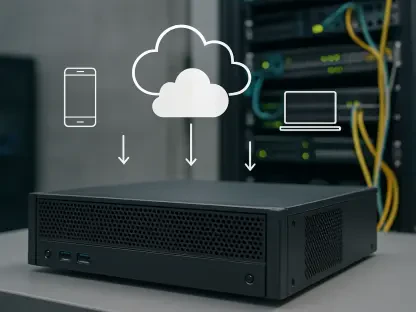What happens when a cyberattack strikes in the dead of night, targeting an organization’s most sensitive data? At 3 a.m., while most are asleep, Security Operations Centers (SOCs) stand vigilant, acting as the first line of defense against digital threats that could cripple businesses or expose critical information. These dedicated teams operate in the shadows, tirelessly monitoring, detecting, and neutralizing risks before they escalate into full-blown disasters. The battle against cybercrime is relentless, and SOCs are at the forefront, armed with sophisticated tools to outmaneuver increasingly cunning adversaries.
The significance of SOCs cannot be overstated in an era where cyberattacks cost businesses billions annually and threaten national security. With ransomware attacks surging and cloud-based systems introducing new vulnerabilities, the need for robust cybersecurity has never been more urgent. SOCs serve as the nerve center for organizations, ensuring that threats are identified and mitigated swiftly, often before any damage is done. This article delves into how these centers harness cutting-edge tools to combat cyber threats, offering a glimpse into the technology and strategies that keep digital landscapes secure.
The Rising Tide of Cyber Threats and the Need for Advanced Tools
Cyberattacks have evolved from isolated nuisances to pervasive dangers affecting every sector, from small businesses to global governments. The financial toll of ransomware alone is staggering, with damages projected to soar into the billions each year. As organizations adopt hybrid IT environments, blending on-premises and cloud systems, new risks emerge, often due to simple misconfigurations that attackers exploit with ease. SOCs face a daunting task in staying ahead of these threats, necessitating the adoption of specialized tools to protect sprawling digital infrastructures.
The complexity of modern IT setups amplifies the challenge. Cloud environments, while offering scalability, often shift the burden of secure configuration onto users, leaving room for errors that can be catastrophic. A single misstep in access controls or storage settings can open the door to breaches. This reality underscores the critical demand for advanced technological solutions within SOCs, enabling them to monitor vast networks, detect anomalies, and respond with precision to an ever-shifting threat landscape.
Inside the SOC Toolkit: Technologies Battling Cybercrime
SOCs rely on a multifaceted arsenal of tools, balancing proactive prevention with rapid response to tackle cyber threats head-on. Vulnerability management tools form a cornerstone, using Static and Dynamic Application Security Testing (SAST/DAST) to identify flaws in software during development. Automated patch management and configuration checks further fortify infrastructure, addressing exploits like the notorious Log4j vulnerability that once shook the cybersecurity world. These technologies aim to seal gaps before attackers can exploit them.
For incidents that slip through preventive measures, detection and response tools are indispensable. Security Information and Event Management (SIEM) systems aggregate and analyze data across networks, correlating events to uncover hidden threats. Behavioral analytics enhance this by flagging unusual activities, such as unauthorized access attempts in virtual environments. These tools ensure that even subtle signs of intrusion are caught early, minimizing potential damage in high-stakes scenarios.
Automation plays a pivotal role through Security Orchestration, Automation, and Response (SOAR) platforms, which streamline incident triage and enable swift countermeasures. However, challenges persist, especially in cloud settings where isolation tools for Platform-as-a-Service (PaaS) lag behind traditional endpoint solutions. Despite such hurdles, SOCs continuously adapt, integrating real-time threat intelligence to bolster their defenses against sophisticated attacks, ensuring a dynamic balance between prevention and reaction.
Expert Perspectives on Tool Effectiveness in SOCs
Insights from cybersecurity professionals shed light on the practical impact of these tools within SOCs. Industry expert Klaus Haller has emphasized the importance of unifying vulnerability management with incident response, stating, “Only by integrating these two pillars can organizations achieve a truly comprehensive security posture.” This perspective highlights the necessity of a holistic approach, where tools are not siloed but work in tandem to address multifaceted threats.
Real-world experiences further illustrate the stakes involved. In a recent ransomware incident, one SOC team utilized automated response tools to cut off data exfiltration within minutes, slashing potential losses significantly. Such cases demonstrate how technology can shrink response times from hours to moments, a critical factor when every second counts. These stories from the frontline reveal both the power of current tools and the persistent challenges in keeping pace with evolving attack methods.
Actionable Strategies for Strengthening SOC Defenses
For organizations aiming to enhance their SOC capabilities, embedding security early in development processes is a vital step. Incorporating SAST/DAST tools into Continuous Integration/Continuous Deployment (CI/CD) pipelines ensures vulnerabilities are caught before software goes live. This proactive measure reduces the risk surface, allowing teams to address issues during the design phase rather than scrambling post-deployment.
Beyond development, leveraging SIEM systems for centralized log analysis offers deeper visibility into network activities. Integrating external threat intelligence enriches this data, providing context to detect subtle attack patterns. Additionally, adopting SOAR platforms automates repetitive tasks, freeing analysts to focus on complex threats, while structured workflows via IT Service Management (ITSM) platforms ensure seamless coordination among stakeholders during crises.
Addressing cloud-specific challenges is equally crucial. Prioritizing training on cloud security and investing in tailored tools can mitigate misconfiguration risks in PaaS environments. Periodic audits of access controls and storage settings further harden defenses. These practical steps create a roadmap for SOCs to optimize their toolsets, ensuring both robust prevention and agile recovery in the face of relentless cyber threats.
Reflecting on the Path Forward for SOCs
Looking back, the journey of SOCs in combating cyberattacks showcases a remarkable blend of human expertise and technological innovation. The dual focus on vulnerability management and incident response proved essential in reducing risks and mitigating breaches. Tools like SIEM and SOAR emerged as game-changers, enabling teams to handle vast data volumes and respond with unprecedented speed.
Yet, the road ahead demands even greater adaptation. As cloud environments continue to dominate, closing gaps in response tools for PaaS and similar platforms becomes a priority. Organizations need to invest in continuous training and next-generation solutions to tackle misconfigurations and emerging threats. By fostering collaboration across teams and integrating advanced analytics, SOCs can build resilient defenses, ready to face the evolving challenges of the digital age.









